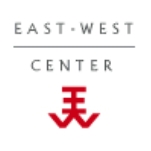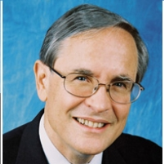The East-West Center was created by the United States Congress in 1960 to provide an organization that would serve as a catalyst to strengthen relations and understanding between the United States and Asian and Pacific nations. The East-West Center coordinates research, educational classes and cultural interactions for the purpose of increasing dialogue between the principals and creating mutually beneficial solutions. Sometimes the Center is criticized for being too centered on corporate and business concerns between U.S. and Asian markets - especially now that a majority of the members of the Center’s Board of Governors have been appointed by the Republican Governor of Hawaii, Linda Lingle, and by Secretary of State Condolezza Rice.
- Research - There are four basic areas of research at the Center. The areas include (1) Economics, (2) Environmental Change, Vulnerability and Governance, (3) Politics, Governance and Security and (4) Population and Health. Under the auspices of these research groups, there are further divisions, such as the Asian International Justice Initiative (AIJI). AIJI has developed an informational project to educate the people of Cambodia about the tribunals taking place in their country relating to crimes against humanity committed by the Khmer Rouge regime during the late 1970s. The organization has been involved in training both the prosecution and defense counsels for these tribunals. The East-West Center has also been developing computer models to track the spread of HIV/AIDS through Asian and Pacific countries. The models enable the region’s national health programs to develop policies to combat the virus.
- Alumni - More than 50,000 people have created or participated in East-West Center functions since its inception in 1960. The Center attempts to draw on the past experience of its alumni for future research, dialogue and projects.
- Education - The East-West Center tries to extend its education arm all the way from kindergarten through graduate level courses. The Asia Pacific Education Program for Schools incorporates Asia Pacific curriculum in K-12 programs throughout the United States. Programs and educational seminars are also sponsored for both college undergraduates and undergraduate faculty. These efforts culminate in the Asia Pacific Leadership Program, which provides intensive training in many different leadership positions in the region.
- Journalism Fellowships - These fellowships and exchanges sponsored by the Center are intended to promote understanding of the intricacies of the Asia Pacific region through study tours and interaction with government officials, business leaders and other notable people in the Asia Pacific community. Fellowships are available for working American and Asia Pacific journalists.
- Pacific Island Development Program - Established in 1980, this program seeks to enhance the quality of life in Pacific Island nations and sustain equitable social and economic development. It co-produces, five days a week, a news review called the Pacific Islands Report.
(by George R. Ariyoshi, Hawaii Business)
- Table of Contents
- Overview
- History
- What it Does
- Where Does the Money Go
- Controversies
- Suggested Reforms
- Comments
- Leave a comment


After many years as the director of the Center’s international relations program, Charles E. Morrison was chosen to be president of the Center beginning on August 1, 1998. Morrison has a Ph.D. from the Johns Hopkins School of Advanced International Studies (SAIS), specializing in Asian international relations.
- Latest News
- D.C. Public Schools will Teach all Second-Graders to Ride a Bike
- New Rule in Germany Limits Sales of Sex-Themed E-Books to 10pm to 6am
- What Happened to the 6-Year-Old Tibetan Boy the Chinese Government Kidnapped 20 Years Ago?
- U.S. Ambassador to Turkey Photoshops his Hair Color to Mock Turkish Mayor
- Mystery Artist Calls Attention to Unfixed Potholes by Drawing Penises around Them
The East-West Center was created by the United States Congress in 1960 to provide an organization that would serve as a catalyst to strengthen relations and understanding between the United States and Asian and Pacific nations. The East-West Center coordinates research, educational classes and cultural interactions for the purpose of increasing dialogue between the principals and creating mutually beneficial solutions. Sometimes the Center is criticized for being too centered on corporate and business concerns between U.S. and Asian markets - especially now that a majority of the members of the Center’s Board of Governors have been appointed by the Republican Governor of Hawaii, Linda Lingle, and by Secretary of State Condolezza Rice.
- Research - There are four basic areas of research at the Center. The areas include (1) Economics, (2) Environmental Change, Vulnerability and Governance, (3) Politics, Governance and Security and (4) Population and Health. Under the auspices of these research groups, there are further divisions, such as the Asian International Justice Initiative (AIJI). AIJI has developed an informational project to educate the people of Cambodia about the tribunals taking place in their country relating to crimes against humanity committed by the Khmer Rouge regime during the late 1970s. The organization has been involved in training both the prosecution and defense counsels for these tribunals. The East-West Center has also been developing computer models to track the spread of HIV/AIDS through Asian and Pacific countries. The models enable the region’s national health programs to develop policies to combat the virus.
- Alumni - More than 50,000 people have created or participated in East-West Center functions since its inception in 1960. The Center attempts to draw on the past experience of its alumni for future research, dialogue and projects.
- Education - The East-West Center tries to extend its education arm all the way from kindergarten through graduate level courses. The Asia Pacific Education Program for Schools incorporates Asia Pacific curriculum in K-12 programs throughout the United States. Programs and educational seminars are also sponsored for both college undergraduates and undergraduate faculty. These efforts culminate in the Asia Pacific Leadership Program, which provides intensive training in many different leadership positions in the region.
- Journalism Fellowships - These fellowships and exchanges sponsored by the Center are intended to promote understanding of the intricacies of the Asia Pacific region through study tours and interaction with government officials, business leaders and other notable people in the Asia Pacific community. Fellowships are available for working American and Asia Pacific journalists.
- Pacific Island Development Program - Established in 1980, this program seeks to enhance the quality of life in Pacific Island nations and sustain equitable social and economic development. It co-produces, five days a week, a news review called the Pacific Islands Report.
(by George R. Ariyoshi, Hawaii Business)
Comments


After many years as the director of the Center’s international relations program, Charles E. Morrison was chosen to be president of the Center beginning on August 1, 1998. Morrison has a Ph.D. from the Johns Hopkins School of Advanced International Studies (SAIS), specializing in Asian international relations.
- Latest News
- D.C. Public Schools will Teach all Second-Graders to Ride a Bike
- New Rule in Germany Limits Sales of Sex-Themed E-Books to 10pm to 6am
- What Happened to the 6-Year-Old Tibetan Boy the Chinese Government Kidnapped 20 Years Ago?
- U.S. Ambassador to Turkey Photoshops his Hair Color to Mock Turkish Mayor
- Mystery Artist Calls Attention to Unfixed Potholes by Drawing Penises around Them





Comments